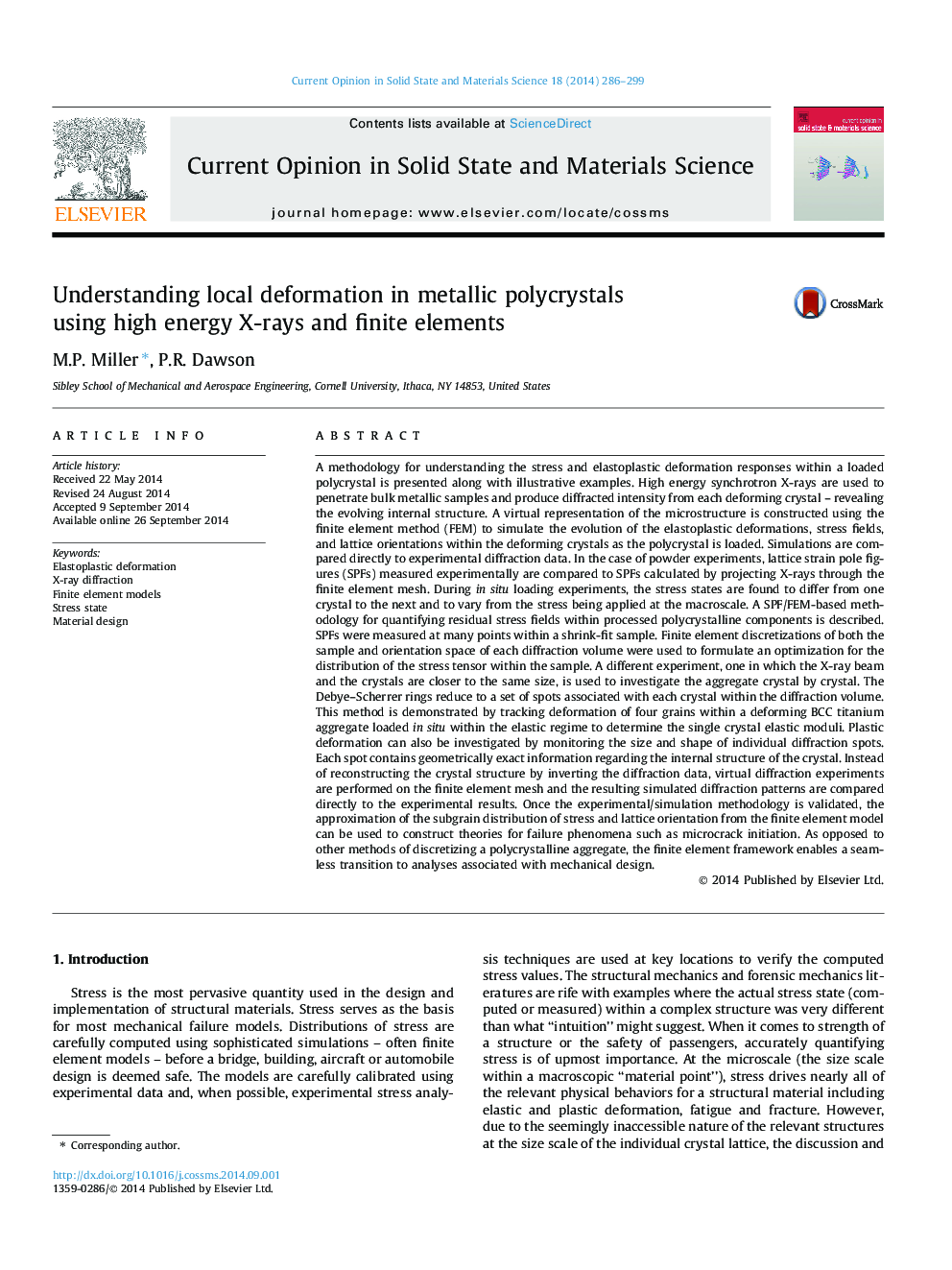| Article ID | Journal | Published Year | Pages | File Type |
|---|---|---|---|---|
| 1555377 | Current Opinion in Solid State and Materials Science | 2014 | 14 Pages |
Abstract
A methodology for understanding the stress and elastoplastic deformation responses within a loaded polycrystal is presented along with illustrative examples. High energy synchrotron X-rays are used to penetrate bulk metallic samples and produce diffracted intensity from each deforming crystal - revealing the evolving internal structure. A virtual representation of the microstructure is constructed using the finite element method (FEM) to simulate the evolution of the elastoplastic deformations, stress fields, and lattice orientations within the deforming crystals as the polycrystal is loaded. Simulations are compared directly to experimental diffraction data. In the case of powder experiments, lattice strain pole figures (SPFs) measured experimentally are compared to SPFs calculated by projecting X-rays through the finite element mesh. During in situ loading experiments, the stress states are found to differ from one crystal to the next and to vary from the stress being applied at the macroscale. A SPF/FEM-based methodology for quantifying residual stress fields within processed polycrystalline components is described. SPFs were measured at many points within a shrink-fit sample. Finite element discretizations of both the sample and orientation space of each diffraction volume were used to formulate an optimization for the distribution of the stress tensor within the sample. A different experiment, one in which the X-ray beam and the crystals are closer to the same size, is used to investigate the aggregate crystal by crystal. The Debye-Scherrer rings reduce to a set of spots associated with each crystal within the diffraction volume. This method is demonstrated by tracking deformation of four grains within a deforming BCC titanium aggregate loaded in situ within the elastic regime to determine the single crystal elastic moduli. Plastic deformation can also be investigated by monitoring the size and shape of individual diffraction spots. Each spot contains geometrically exact information regarding the internal structure of the crystal. Instead of reconstructing the crystal structure by inverting the diffraction data, virtual diffraction experiments are performed on the finite element mesh and the resulting simulated diffraction patterns are compared directly to the experimental results. Once the experimental/simulation methodology is validated, the approximation of the subgrain distribution of stress and lattice orientation from the finite element model can be used to construct theories for failure phenomena such as microcrack initiation. As opposed to other methods of discretizing a polycrystalline aggregate, the finite element framework enables a seamless transition to analyses associated with mechanical design.
Related Topics
Physical Sciences and Engineering
Materials Science
Materials Chemistry
Authors
M.P. Miller, P.R. Dawson,
